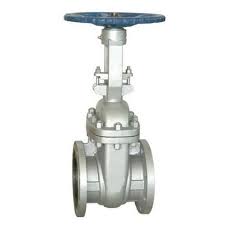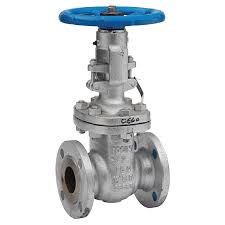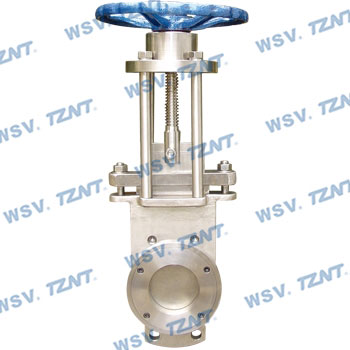How to Choose the Stem of Cast Steel Gate Valve

Features of the cast steel gate valve
The cast steel gate valve has low fluid resistance, and the sealing surface is less eroded by the medium, with easy opening and closing. The flow direction of the medium is not restricted, the flow is not disturbed, and the pressure is not reduced. The structure is simple, the length of the structure is short, the manufacturing process is good, there are many optional materials for high temperature and high-pressure resistance, and the scope of application is wide.
oil and gas valves
how to tell if valve is open or closed
The stem of the cast steel gate valve
The cast steel gate valve has a part called the stem. How to select the stem of this cast steel gate valve? What are the precautions? Let’s take a look.
The common cast steel gate valve stem is easy to accumulate debris such as welding slag, stones, sediment, etc., which is not conducive to sealing and circulation. Moreover, the elastic seat gate valve of some manufacturers adopts a flat-bottomed full-basin straight-through design, which is not easy to accumulate debris and make sure the seal is reliable so that the fluid can flow unobstructed.
In fact, we can buy the standard stem from the valve accessories market, which is mass-produced and has a reference standard for basic data and size. If it is non-standard, it must be customized separately. Another important thing is that the stem of the cast steel gate valve is also different in material. This small accessory has now been competed by many manufacturers, in order to maximize their own interests or to win a customer to reduce the price.
How to Select the Right Cast Steel Gate Valve?
Selecting the right cast steel gate valve for your application requires careful consideration of several key factors. The first step is to determine the pressure rating the valve needs to handle, such as Class 150, 300, or 600. Next, you should evaluate the temperature range the valve will be exposed to, ensuring the material and design can withstand the expected operating temperatures.
Equally important is media compatibility – assessing the chemical composition and corrosive properties of the media flowing through the valve, and selecting a valve material that is compatible. The end connections of the valve must also match the piping system for a secure and leak-free installation. Additionally, you should consider the size and flow requirements to ensure the valve can handle the necessary capacity and flow rate for your application.
Finally, factors like maintenance and accessibility should be taken into account, such as the ease of servicing the valve and the availability of spare parts. By carefully evaluating these key aspects, you can select the cast steel gate valve that best meets the unique requirements of your system and ensures reliable, long-lasting performance.
The Application of Classification of Cast Steel Gate Valve
The Cast Steel Gate Valve is a versatile and reliable valve solution found in a variety of industrial applications. One of the popular choices in this category is the Stainless Steel Gate Valve, which offers exceptional corrosion resistance and durability, making it a top pick for demanding environments. For applications requiring extra strength and resilience, the Heavy Duty Gate Valve Models from renowned brands like Cameron are a preferred option.
Additionally, the Cast Steel Gate Valve excels in high-temperature settings, with the High Temperature Gate Valve Applications catering to the needs of industries such as oil and gas, chemical processing, and power generation. Cameron’s extensive product portfolio includes a wide range of cast steel gate valves designed to withstand elevated temperatures and ensure safe, efficient operation in these challenging environments.

Features of Cast Steel Gate Valve
- Reliable Shut-Off Performance
Cast steel gate valves are renowned for their ability to provide a tight, reliable shut-off, making them suitable for critical isolation applications where absolute sealing is required. - Durable Construction
The use of high-quality cast steel materials in the valve body and components ensures exceptional durability and resistance to wear, corrosion, and high-pressure conditions. - Versatile Design
Cast steel gate valves are available in a wide range of sizes, pressure ratings, and end connections, allowing them to be adapted to a variety of piping systems and industrial processes. - Easy Maintenance
The simple quarter-turn operation and accessible design of cast steel gate valves facilitate easy maintenance and servicing, minimizing downtime and ensuring long-term reliable performance. - Temperature Resistance
Many cast steel gate valve models are specifically engineered to withstand elevated temperatures, making them suitable for high-heat applications such as steam systems and petrochemical plants. - Compact Footprint
The space-saving design of cast steel gate valves allows for efficient installation and integration within cramped or confined spaces, often a critical factor in industrial settings.
The Installation Steps for Cast Steel Gate Valve
- Step 1: Verify Valve Compatibility
Ensure that the cast steel gate valve model and its specifications (e.g., pressure rating, end connections) are compatible with the intended piping system and application requirements. - Step 2: Prepare the Piping System
Clean and inspect the piping system to remove any debris or obstructions. Measure the exact distance between the flanges or threaded connections where the valve will be installed. - Step 3: Install Valve Gaskets
Place the appropriate gaskets on the valve’s end connections, ensuring they are properly aligned and seated to create a tight seal. - Step 4: Position the Valve
Carefully lift and position the cast steel gate valve in the desired location, aligning the end connections with the piping system. - Step 5: Secure the Valve
Tighten the flange bolts or thread the valve into the piping system using the recommended torque specifications to secure the valve in place. - Step 6: Perform Leak Testing
Conduct a thorough leak test on the installed valve to verify the integrity of the connections and the valve’s sealing performance. - Step 7: Operate the Valve
Gradually open and close the cast steel gate valve to ensure smooth operation and proper functionality. - Step 8: Monitor and Maintain
Regularly inspect the valve for any signs of wear or leakage, and perform scheduled maintenance as per the manufacturer’s recommendations.
The Specifications of Cast Steel Gate Valve
| Specification | Details |
|---|---|
| Type | Gate Valve |
| Ball Material | Cast Steel |
| Attachment Type | Flanged |
| Thread Standard | ANSI B16.5 |
| Thread Size | 4 inch (100 mm) |
| Body Material | Cast Steel |
| Safe for Use With | Water, Oil, Gas, Steam |
| Handle Type | Handwheel |
| Handle Material | Cast Steel |
| Maximum Working Pressure | 1,500 psi |
| Maximum Working Pressure | 103 bar |
| Operating Pressure | 1,000 psi (69 bar) |
